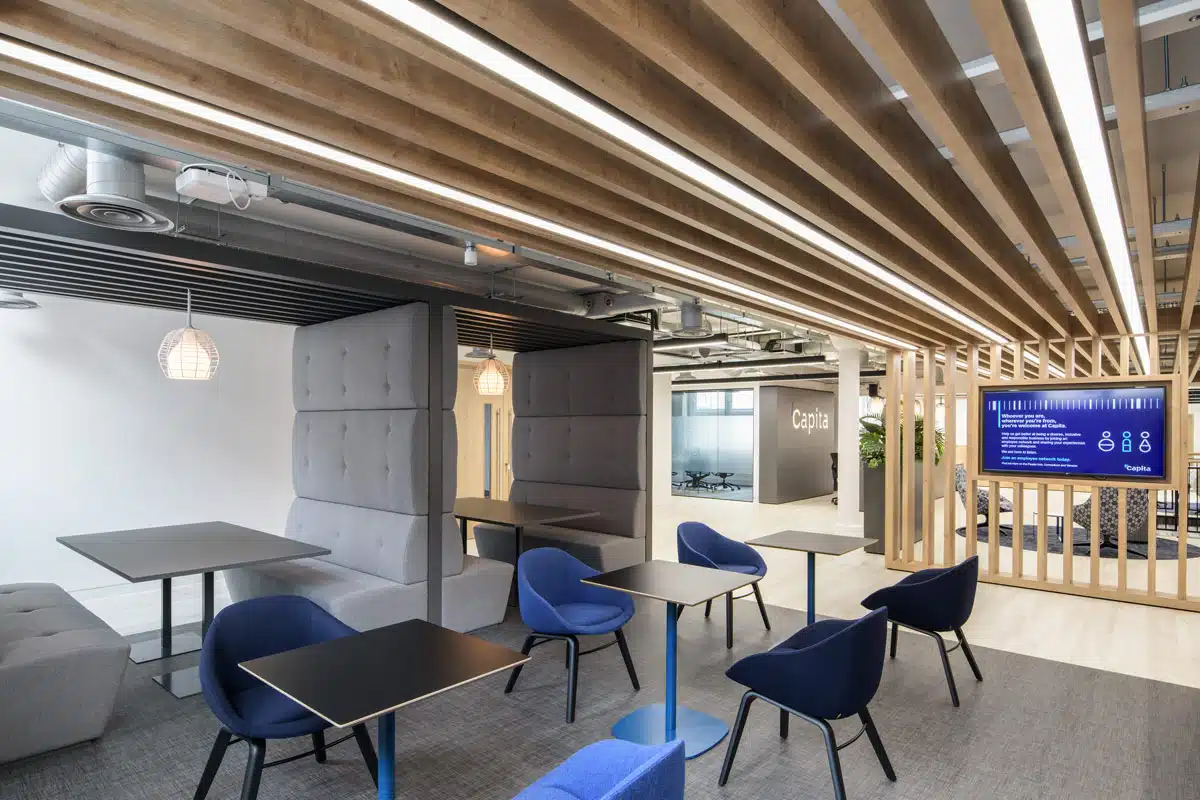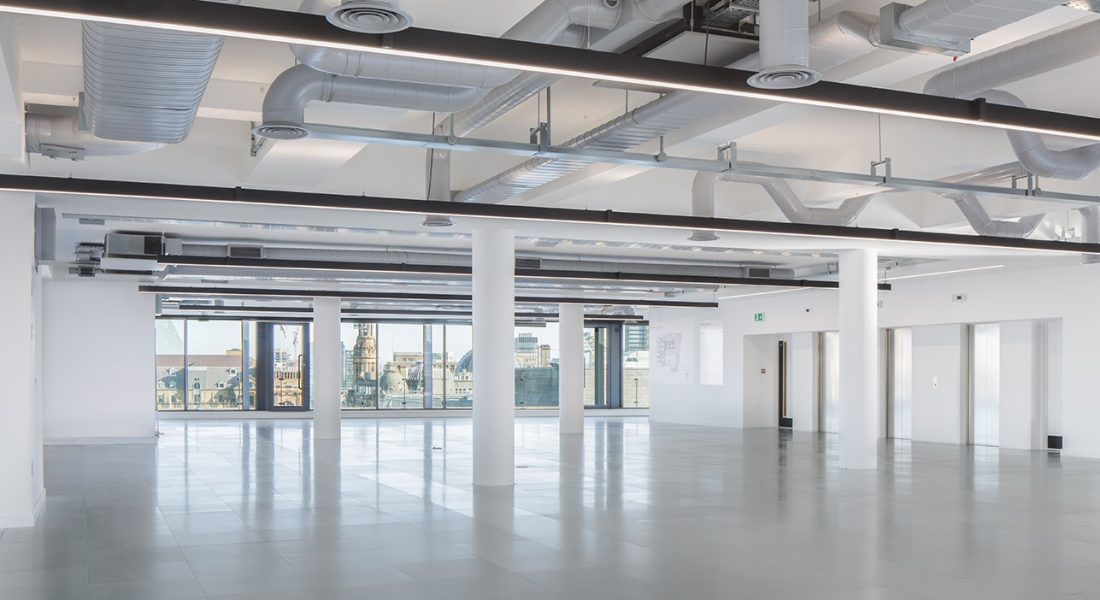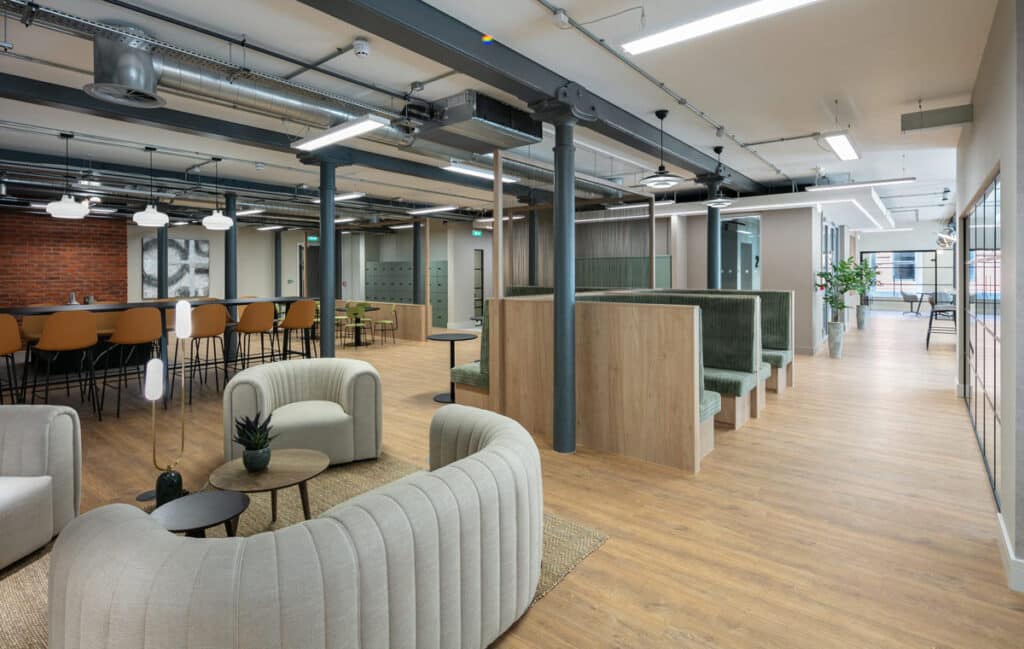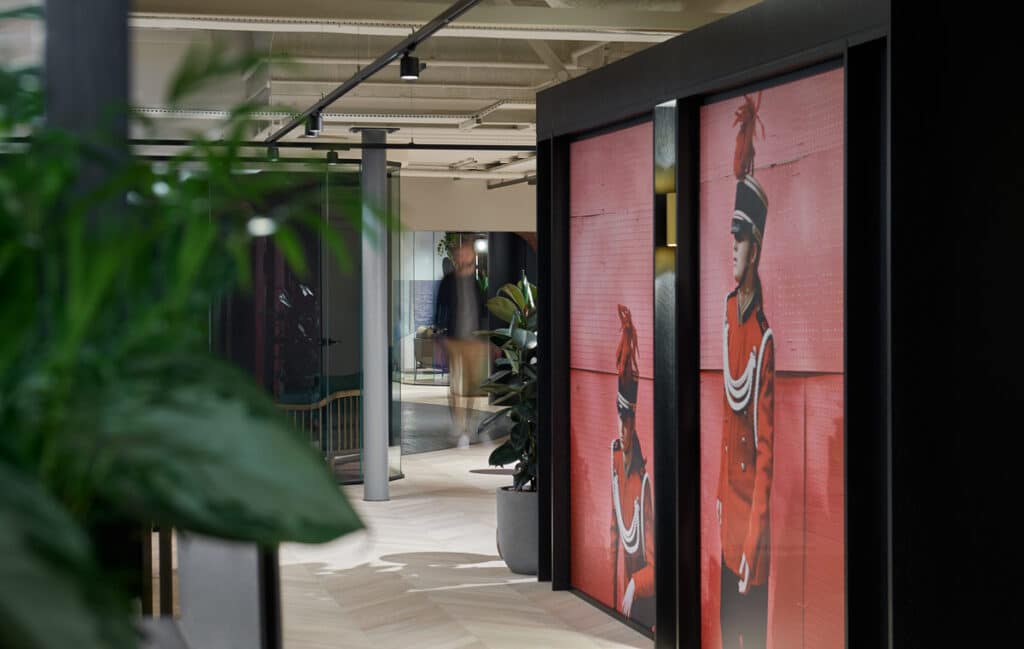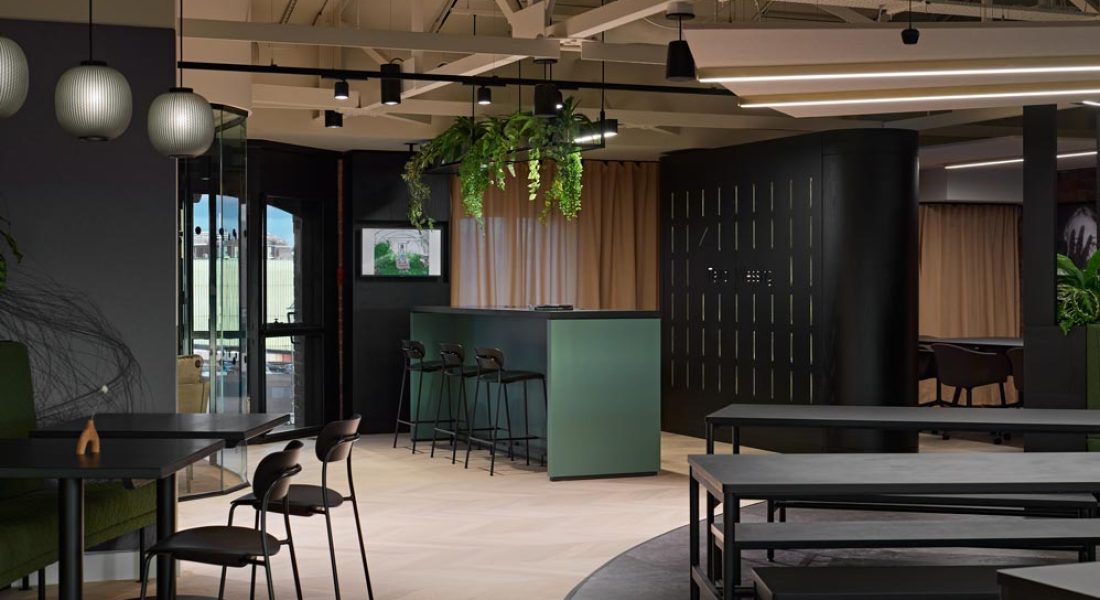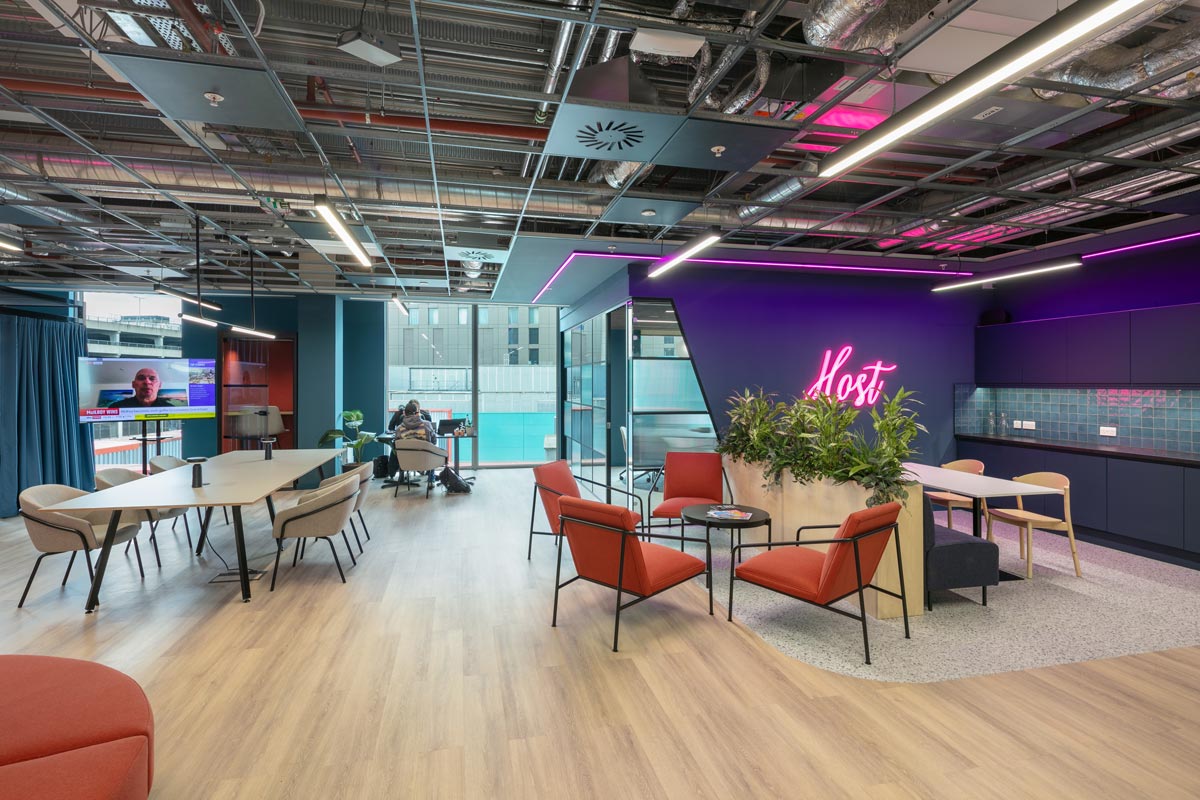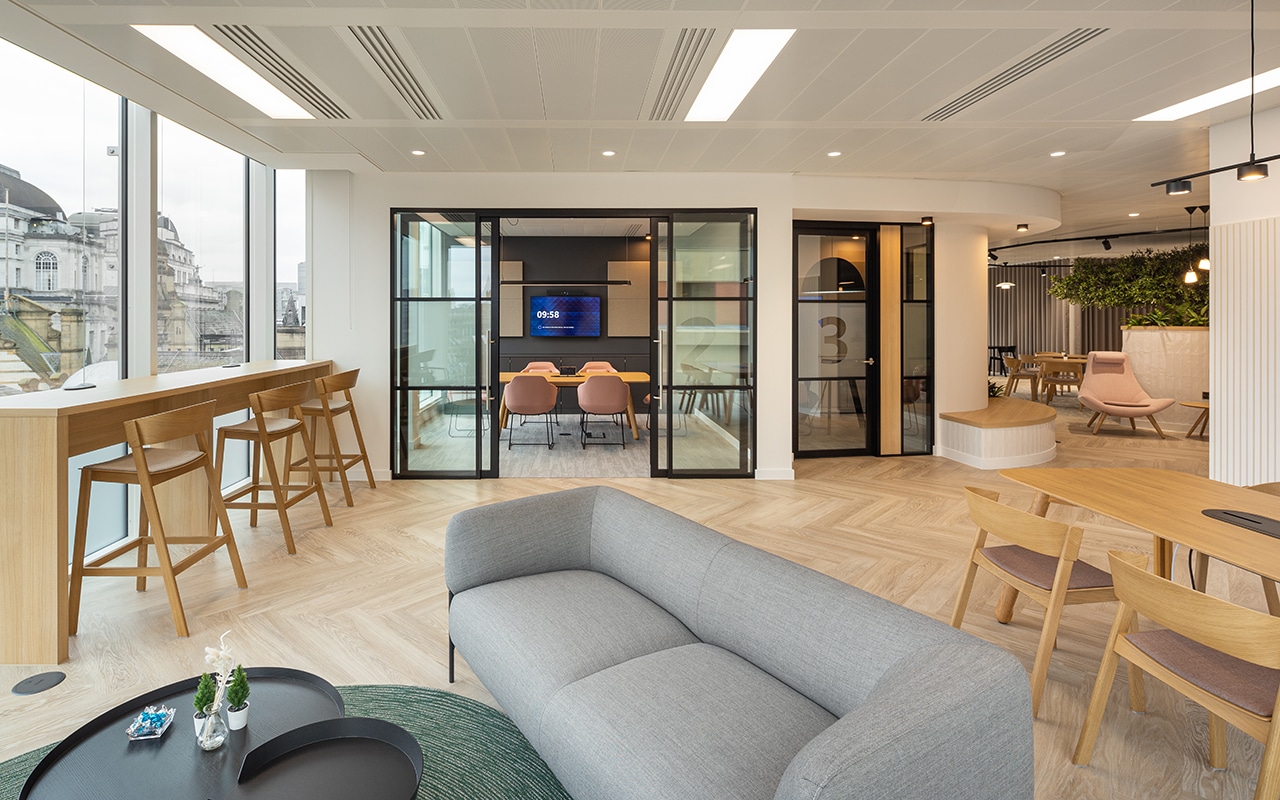Energy performance has become a central part of commercial office planning. With regulations tightening and minimum Energy Performance Certificate ratings increasing, businesses can no longer treat efficiency as an optional extra. Every office refurbishment and fit-out now has the potential to affect compliance, operational costs and long term asset value. This shift is especially important for owners, occupiers and landlords preparing for future Minimum Energy Efficiency Standards.
In this article, we look at how EPC ratings link directly to fit-out decisions and why early planning helps future proof your workspace. We also explore how ADT Workplace supports clients in creating high quality workplaces that meet performance obligations and remain compliant as regulations evolve.
Why EPC ratings matter in today’s commercial buildings
Energy Performance Certificates provide a clear indication of how efficient a building is. They show how much energy the property is expected to use and outline the estimated carbon emissions. Since an EPC is required whenever a commercial property is sold, leased or substantially improved, it has become a vital document for businesses. Landlords and tenants both rely on it when assessing risk, running costs and future compliance.
Current government proposals indicate significant changes ahead. The minimum requirement is expected to rise to a C rating by 2027 and a B rating by 2030. These increases create pressure for older buildings that already sit below the threshold. A workplace fit-out is now one of the most effective opportunities to enhance performance and support compliance.
How fit-out decisions influence energy performance
A fit-out shapes how a building looks and feels. It also shapes how it performs. Lighting choices, HVAC systems, insulation levels, glazing and electrical controls all influence energy consumption. A visually impressive refurbishment that ignores these areas may fail to support a strong EPC rating. This creates compliance risks and increases operational costs.
A carefully planned fit-out, however, can significantly improve energy efficiency. It can help raise EPC scores, reduce energy waste and create a more comfortable environment. ADT Workplace works closely with clients to balance design, sustainability and compliance. This ensures every decision supports long term goals as well as day to day performance.
Preparing for future EPC and MEES changes
1. Building fabric upgrades
2. Intelligent lighting strategies
3. Efficient HVAC and mechanical systems
4. Low carbon technologies
5. Sustainable material selection
Using responsible materials supports wider environmental goals. It also reinforces brand values and improves the overall sustainability profile of the fit-out.
These measures support a stronger EPC rating and help align your workspace with future industry standards.
Why early EPC planning protects your project
EPC assessments should begin early in the fit-out process. Starting with a clear understanding of the building’s current performance helps guide design decisions. It also helps identify gaps that may limit future compliance. When EPC considerations are introduced late, businesses often face delays, redesign costs or rushed upgrades. Early planning prevents these issues and ensures the project runs smoothly.
The proposed rise to a minimum C rating by 2027 and B rating by 2030 makes this even more important. Taking proactive steps now ensures your workspace remains legally compliant and operationally efficient as regulations shift.
A performance led approach to commercial fit-outs
ADT Workplace integrates energy performance into each stage of the design and delivery process. This approach supports comfort, compliance and business sustainability.
Our method includes:
EPC review and early analysis
A clear understanding of the existing EPC rating helps establish the right performance targets before design work begins.
Design strategy aligned with performance goals
Responsible procurement and specification
Products, systems and finishes are chosen for both quality and energy performance. This ensures long lasting value for clients.
Post occupancy checks and feedback
After staff move in, performance is reviewed. This ensures systems are working as expected and highlights any refinements that may improve efficiency.
The business benefits of EPC driven fit-out planning
Considering EPC performance throughout your fit-out delivers clear advantages. The workspace becomes more economical to run, more sustainable and more resilient to future regulation changes. Staff comfort improves, energy waste decreases and the property becomes more attractive to landlords and occupiers.
A performance driven fit-out also supports broader sustainability targets. It strengthens your business reputation and aligns your workplace with changing expectations around responsible design.
Partner with ADT Workplace
As workplace specialists, ADT Workplace combines design expertise with a strong understanding of building performance and compliance. We help clients create workplaces that look impressive, perform efficiently and remain compliant with evolving EPC requirements. Our team works with landlords, occupiers and property consultants to deliver responsible, future ready environments.
If you are planning an office refurbishment or full fit-out, we can support you with a strategy that balances creativity with long term performance.

